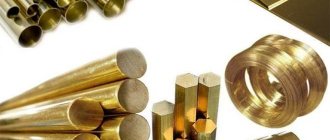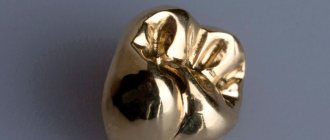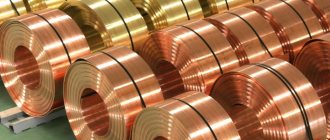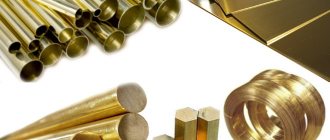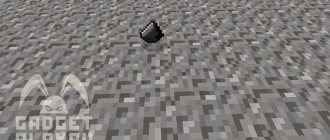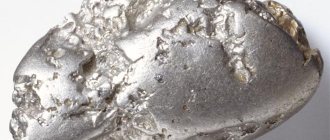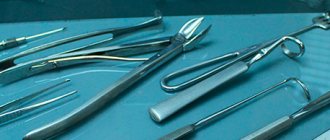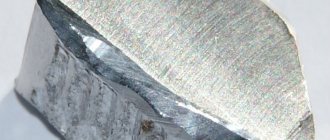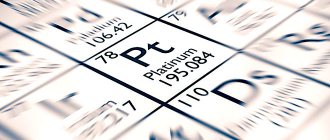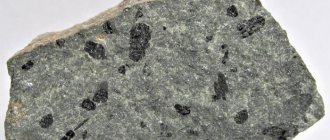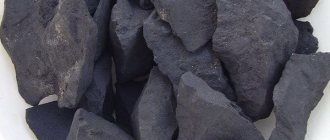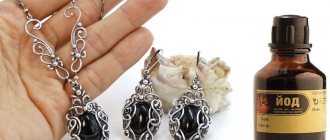Perhaps the most interesting, based on the variety of qualities, brands, characteristics and applications, is a brass alloy. And, despite the fact that its price is lower than, say, copper, it is used even in the manufacture of jewelry. The composition of brass is simple, but different proportions give such diverse qualities that it needs to be discussed in detail.
What is
This is one of the most recognizable materials on the planet. Like bronze, brass is not a metal, but an alloy.
It can be two- or multi-component. The base component of the alloy is the main non-ferrous metal of the planet, copper:
- In the first case, it is supplemented with zinc (up to 44%). This pair accounts for the bulk of the mass in the alloy.
- In multicomponent compositions, tin, lead, nickel, iron, manganese, and other alloys are added to zinc.
Zinc improves consumer properties, simultaneously reducing the price of the final product.
Brass is not a metal. Like bronze, it is a conglomerate of several components.
The influence of alloying elements on the properties of brasses
Zinc provides high strength and at the same time ductility of the alloy (if you add up to 30% of this element).
However, the characteristics of brass are determined not only by the main (Cu, Zn), but also by alloying elements. The latter are added in small quantities to metals to obtain additional properties.
If you add:
- lead and bismuth
- metal will be cut better;
- nickel, tin
– will receive anti-corrosion properties (tin ones are used in salty marine environments);
- silicon
– hardness will increase;
- manganese
– the alloy will become high-strength;
- aluminum
– the volatility of Zn will decrease;
- arsenic, nickel, iron
– will allow operation in acidic and alkaline environments.
These elements are used for the manufacture of alloys of various grades in accordance with GOST. In addition to the letter designation, there is a digital designation showing the percentage of main metals.
Story
The documented history of brass begins one hundred years BC:
- At this time, the production of the alloy was mastered by the ancient Romans.
- 900 years later, residents of the Near and Middle East met him. The source of raw materials (copper, lead) were deposits in northern Persia (present-day Iran).
- During the same period, it was brought to the Caucasus along the Silk Road.
- The British were the first Europeans to acquire alloying at the end of the 18th century. It was a copper-zinc material.
The material's popularity over thousands of years has been bolstered by its resemblance to gold.
Classification
The variety of alloys gave rise to the need to organize them.
By composition
The main division of brasses is based on the complexity of the composition:
- Simple. Consist of copper plus zinc. The second name is two-component.
- Special (polycomponent) brass . In addition to copper and zinc, they include aluminum, lead, nickel, iron, and other components. These are alloying additives (ligatures) added during melting to improve the utilitarian properties of the final product.
The class of special brass is determined by the dominant alloy: manganese, aluminum, tin, nickel, others.
Zinc in the composition gives color to the alloy:
- red (4.9 – 19.9% zinc);
- yellow (20 – 35.9%);
- green (36 – 39.9%).
The second name for reddish brass is tompak . The name comes from the Malay tambaga (copper).
Simple alloys with a zinc content of 10-40% are considered jewelry. Their colors are yellow, green, gold.
According to production technology
Brass obtained by different methods comes in two types:
- Deformable. Wire, tape, pipe, sheet.
- Foundries. Bearings, equipment filling, fittings.
| Double wrought brasses | |
| Brand | Application area |
| L96, L90 | Parts of machines, thermal and chemical equipment, coils, bellows, etc. |
| L85 | Parts of machines, thermal and chemical equipment, coils, bellows, etc. |
| L80 | Parts of machines, thermal and chemical equipment, coils, bellows, etc. |
| L70 | Sleeves for chemical equipment, individual stamped products |
| L68 | Most stamped products |
| L63 | Nuts, bolts, car parts, condenser pipes |
| L60 | Thick-walled pipes, nuts, machine parts. |
| Multi-component wrought brasses | |
| Brand | Application area |
| LA77-2 | Marine condenser pipes |
| LAZ60-1-1 | Details of sea vessels. |
| LAN59-3-2 | Parts of chemical equipment, electrical machines, marine vessels |
| LZhMa59-1-1 | Bearing shells, aircraft and marine parts |
| LN65-5 | Gauge and condenser tubes |
| LMts58- 2 | Nuts, bolts, fittings, machine parts, Soviet small change coin of the 1958 model, in denomination 1-5 kopecks. |
| LMtsA57-3-1 | Details of sea and river vessels |
| LO90-1 | Condenser pipes of heating equipment |
| LO70-1 | Condenser pipes of heating equipment |
| LO62-1 | Condenser pipes of heating equipment |
| LO60-1 | Condenser pipes of heating equipment |
| LS63-3 | Watch parts, bushings |
| LS74-3 | Watch parts, bushings |
| LS64-2 | Printing matrices |
| LS60-1 | Nuts, bolts, gears, bushings |
| LS59-1 | Nuts, bolts, gears, bushings |
| LZhS58-1-1 | Parts made by cutting |
| LK80-3 | Corrosion-resistant machine parts |
| LMsh68-0.05 | Condenser pipes |
| LANKMts75- 2- 2.5- 0.5- 0.5 | Springs, pressure tubes |
Bronzes are classified similarly.
Laboratory methods to distinguish brass from bronze
All these methods are suitable only if you want to distinguish standard brass from bronze, which contains a maximum of tin, as well as zinc. Otherwise, the tests will be quite difficult, due to the fact that there is tin-free bronze, which does not contain tin at all. Accordingly, the color of the metal will be completely different. Therefore, it is quite difficult to find out the composition of the metal at home. In laboratory conditions, the composition is most often determined using spectrographic and refractometric analysis.
There are tests with nitric acid. To carry out the tests, pour some alloy shavings into the container and fill it with 50% nitric acid. The mixture of test tubes needs to be warmed up a little. In a test tube with brass, the alloy will dissolve and you will get a clear solution. In the container of the alloy with tin there will be a white precipitate of its salts.
Antiques
Marking
All brass is marked with the capital letter “L”. Next, the order is determined by the composition:
- For simple brasses, this is one number indicating the percentage of copper in the alloy. For example: L65 is an alloy of 65% copper and 35% (100 - 65) zinc.
- The marking of special brass also contains letters and numbers indicating the type and amount of alloy additives (except zinc). For example, the mark LN64-5 is assigned to material made of 64% copper, 5% nickel and 31% (100 minus 64 minus 5%) zinc.
Since the marking contains data on the quantity and quality of the alloy components, it is fair to consider it the formula of this material.
Receiving technology
Brass does not occur in nature.
The source material for its production is three types of raw materials:
- Primary. Copper, zinc and other ores are mined from natural deposits.
- Copper, zinc, and other metal scrap suitable for recycling (recyclables). Accumulated at collection points.
- Waste from the metallurgical plants' own production cycle.
Traditional production methods involve the use of furnaces for smelting copper and its alloys. Typically these are electro-induction units equipped with a magnetic core and operating at low frequencies.
Microstructure of ground and etched brass alloy under 400x magnification
Alloy production process:
- Hot copper is placed in a furnace.
- Next, lump zinc is loaded.
- Melting takes place at 875-945°C.
- Alloying additives are added to special brasses.
- The mass is mixed until smooth and poured into molds.
The output is flat or round brass ingots. The smelted products have different hardness, degree of hardening and aging.
Advanced technologies include the installation of ventilation for exhaust during melting of vapors that are dangerous to humans.
Differences in the nature of the fracture and evaluation of the finished product
Many people will even say, why bother figuring out whether it’s brass or copper if the two alloys look almost the same? But the fact is that this is important for many, in particular for people who will be involved in making some kind of sculptures or melting them down. Accordingly, very often a distinction is required if you are going to sell metal for scrap.
The fact is that brass is cheaper than bronze, so at a metal collection point they can simply deceive you and offer you a smaller amount. If the weight is small, then the losses will be insignificant, but if you have a fairly large amount of goods, then you will lose a decent amount of money. It is worth noting that there is no need to conduct tests, just look at the finished products. Brass is almost never used in shipping.
Locksmith tool
This material is destroyed when exposed to sea salt water, so compasses and some parts in shipbuilding are used exclusively in bronze. Therefore, if they are trying to deceive you, insist on checking the product, or contact a certified center. They usually have collection points as well as small compact laboratories. They can conduct a quick, simple analysis and analyze the product using laboratory equipment.
It is quite easy to distinguish between metals when viewing the fracture site. Brass breaks in fairly small grains, bronze breaks off in large pieces and has a coarse grain. At the same time, the color of the bronze fracture has a reddish tint; if it is brass, then it has a whitish or yellowish tint.
Accessories skull
Unfortunately, these methods cannot be used at home due to the lack of laboratory equipment. Magnet and chip tests are available for home users. They are also very informative.
Characteristics
There are no uniform basic parameters for brass alloy. However, the material can be easily processed by pressing and mechanical action, with good corrosion resistance.
| Thermal conductivity | 121 W/(m K) |
| Density | 8921 kg/m³ and 7140 kg/m³ |
| Melting temperature | 932 °C |
| Crystal system | cubic system |
| Young's modulus | 115 ± 20 GPa, 100 GPa and 130 GPa |
| Poisson's ratio | 0,37 |
| Young's modulus under compression | 50 GPa |
Peculiarities
There is no single value for the density, melting point, threshold of thermal and electrical conductivity of brass. The parameters are determined by the number and proportion of elements.
The “richer” the composition, the more variations:
- Compared to bronze, brass wears out faster and is less durable. They conduct current and heat worse.
- Not so resistant to corrosion and aggressive environments (sea water, dissolved organic acids). Although on this basis they are superior to pure copper.
- When exposed to acid, brass turns pale to discolored. At the point of contact, a drop of aggressive solution bubbles.
Based on this chemical property, it can be easily distinguished from gold. Nothing happens to him.
- In the range of 212-624°C, the structure of brass is destroyed: the material crumbles.
The rate of corrosion increases with increasing temperature. This phenomenon is neutralized by the final stage of processing: the products are fired at low temperatures.
The influence of alloys on the properties of the alloy
The shortcomings of the material are smoothed out by adding ligatures. Along the way, alloying elements enhance the advantages:
- Tin, nickel, and manganese significantly increase the threshold of strength and corrosion resistance of the alloy.
- Silicon reduces strength and hardness. However, it is easier for a welder to work with such material.
- Lead also reduces utilitarian performance but makes cutting easier.
- Aluminum creates a protective oxide film on the melt, inhibiting the “flight away” of zinc during melting.
The influence of alloys is reflected in the unofficial names of metal alloys. Thus, tin brass is called marine brass. Lead - automatic, since processing is carried out on automatic machines.
Lead alloys are the most popular among brasses.
Silicon-lead material has low abrasion. Valued as a backup for expensive bronzes.
How to distinguish at home?
In practice, there are several simple and proven methods to help identify metals.
How to distinguish bronze from brass using a magnet?
- When it comes to a variety of alloys, it can be quite difficult to distinguish bronze from brass, because they can be almost identical. Many experts believe that bronze is heavier than brass. This is indeed due to the content of tin and lead, which are quite heavy.
- Brass is much lighter due to the presence of zinc. You can conduct a few simple experiments to find out which metal is in front of you. Bronze is almost always magnetic due to the presence of tin.
- That is, if you apply a strong enough magnet, you will see significant magnetization. The higher the tin content in the metal, the stronger the magnetization. Brass, in turn, does not exhibit magnetic properties, that is, when a magnet is placed, it does not stick at all.
Material processing
Determination by weight
This is another method of distinguishing metals. To identify the difference, it is enough to simply weigh bars of the same volume from different alloys in your hands. A bronze specimen will weigh much heavier than a brass blank.
However, the mass of the product is also affected by the density of the connections. Therefore, it is not always recommended to use weight as a clear criterion for distinguishing metals. For example, bronze with a low tin content (2-8%) is distinguished by the fact that it will weigh lighter than its brass counterpart.
How to test bronze by heating and filing at home
We provide you with two more verification options:
- Use a gas burner as it produces the highest temperatures (up to 600 degrees). A home stove will not be enough for this operation. In addition, the experiment will have to be carried out in a separate room (workshop or garage). Take the workpiece and hold it over the fire for a long time. Bronze will not change the appearance. And dark spots will appear on the surface of the brass product.
- If you have the possibility of completely melting the original sample, then conduct such an experiment. When overheated, a white flame and scattering flakes of the same color appeared. This means that Zn burns out and you have brass. It has good ductility. During deformation, it will not lose its physical properties, but bronze will certainly crumble and break if overheated.
- Sawing is the most affordable method that you can do at home without financial costs. Take a hacksaw and try to saw off samples. The brass product can be sawed well and easily, thereby forming layers. The shavings will have a twisted appearance. Metal containing tin when exposed to a sharp object will break into small pieces, producing fine dust. If you try to bend or flatten the sample, you will not achieve a positive result; you will only ruin the workpiece.
This is interesting: Stamped metal products. Types of volumetric stamping
Drill Usage and Marking
Using a drill you can easily identify brass. But it is important to remember that the tool will damage the metal object. The fact is that during operation of the drill, chips come out from under the drill, which for copper are quite long and ornate, while for brass they are, on the contrary, short and needle-shaped. After all, the metal is much softer than its alloy.
Sometimes on a piece of the material being examined you can see markings that can easily tell you what is in front of a person. So, the mark on copper begins with the letter “M”, and on brass - with “L”. But in other countries, product labeling is somewhat different from Russian:
- In the USA you can see C2, C3, C4 badges on brass alloy.
- In the European Union, the letter C is placed on copper and brass, but after it on the metal you can see A, B, C, D, and on the alloy - L, M, N, P, R.
This method makes it quite easy to distinguish pure copper from brass. If markings are present, then you should not resort to other recognition methods.
Where is it used?
The consumer characteristics of brass have made it a popular material in various segments.
Brass rod 10 mm LS59-1
Industry
Brass alloys of various configurations are purchased by manufacturers of equipment for industry, infrastructure, and defense industry:
- Bolts, nuts, bushings, adapters, springs, and other small accessories.
- Parts of ocean and air liners; sea, river vessels.
- Pipes of pressure gauges and condensers.
- Printing. Matrices.
- Parts operating at 300°C.
- Plumbing.
Brass wire 0.5 mm L63
Ammunition manufacturers cannot do without brass.
Other areas
Well polished brass is like gold:
- Residents of Europe and Russia in the century before last found use for it as a budget substitute for precious metal.
- It is used to decorate homes and public spaces. Door handles, locks, bathroom taps, wall decor, and stairs made of golden tombac are not cheap. But how beautiful and status-worthy.
- Medals and other insignia are minted from it.
- Connoisseurs select collections of small plastic art.
Numismatists catch coins in denominations of one, two, three, five kopecks for 1958 at auctions. Their piece price is measured in tens to hundreds of thousands of rubles.
The cost of conventional material for industry is three to four orders of magnitude less.
Application area
The excellent performance characteristics of the material allow it to be used as widely as possible in a variety of industries:
- The brass plate is a flat rolled metal with a thickness of 25 mm. It can be soft, semi-hard, hard and extra hard. The main areas of use are industry, construction and finishing work.
- Brass sheet has a smaller thickness and is used in printing, mechanical and instrument making, energy, electrical and chemical industries.
- Brass pipe can be manufactured in various sections and sizes, due to which it is in demand in such industries as housing and communal services and electric power, instrument and automotive industries. Can be used for the production of batteries, radiators, resistors, capacitors and shut-off valves.
- Brass wire is an extended metal profile of small diameter, which is used in the development of electrical devices, springs, clock mechanisms, machine tools, transformers, adapters, in equipping automotive and aircraft equipment, interior design elements and in jewelry.
- A brass rod is also a long product and can have a round or rectangular cross-section. Used in construction and as raw materials and shut-off valves for the manufacture of equipment.
- Brass tape is necessary for the manufacture of fasteners (nuts, bolts, self-tapping screws), construction and stamped design parts.
